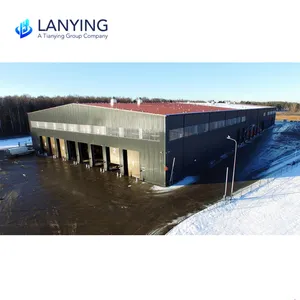
All categories
Featured selections
Trade Assurance
Buyer Central
Help Center
Get the app
Become a supplier

(1398 products available)


























An indispensable part of the contemporary building and real estate sectors, csa building materials is a fundamental component of all constructions. These composite elements comprise two outer layers—usually metal, wood, or plastic—sandwiched in between. Many materials, like polyurethane, polystyrene, or mineral wool—which provide the panel with great insulating qualities—can make the core. Walls, ceilings, and partitions are only a few of the several building uses for csa building materials. These are extensively employed for strength, lightweight character, and remarkable thermal and acoustic insulating capacity.
The market presents a wide spectrum of csa building materials to satisfy various building requirements and tastes. Common forms are metal-faced panels, which usually have steel or aluminum surfaces and provide great weather resistance and durability. Then, wood-faced panels, typically seen in homes for their natural finish, offer a more aesthetic appeal. Conversely, plastic-faced panels are well-known for their lightweight and corrosion resistance, which qualifies them for settings likely to be moist. Every kind of csa building materials is meant to satisfy particular building criteria, guaranteeing the best performance and lifetime under many conditions.
One of csa building materials's strongest qualities is its multifarious use. Lowering heat movement between the inside and outside of a building offers great thermal insulation, helping preserve a steady internal temperature. This leads not only to more comfort but also to a notable energy economy. Furthermore, csa building materials has soundproofing properties, which makes them a great choice for settings when noise control is very important. Their modest weight simplifies carrying and fast installation, lowering labor costs and building time. Moreover, they are meant to be fire-resistant, thereby offering protection and peace of mind should an emergency strike.
The performance and use of csa building materials depend greatly on its basic component. Popular for their great insulating qualities and lightweight nature, polyurethane cores are perfect for energy-efficient constructions. Conversely, polystyrene cores—which fit projects with limited budgets—are well-known for their superior thermal resistance and economy of cost. Industrial and commercial structures use mineral wool cores since they provide exceptional sound absorption and fire protection. The choice of basic material in csa building materials greatly affects their thermal, acoustic, and fire performance, allowing customization depending on particular project requirements.
Thanks to their modular architecture and low-weight construction, installing csa building materials is easy. Both residential and commercial buildings have walls, roofs, and partitions built from them, often using them. Their great insulating qualities help them be used for industry cold storage facilities. Fixing the panels to a supporting framework—which may be done fast and effectively—helps to reduce building downtime. csa building materials is also flexible for many architectural designs and types since it can be personalized with numerous finishes and coatings to improve its aesthetic attractiveness and durability.
When choosing csa building materials for a building project, one should consider particular building-specific criteria. The material used for the outer layers is quite important; wood-faced panels may be used for home projects because of their aesthetic appeal, while metal-faced panels are fit for industrial uses because of their durability. The choice-making process also heavily relies on the core content. Should thermal insulation be a top concern, polyurethane or polystyrene cores are a great choice. Mineral wool cores are great for increased fire resistance. The building site's intended usage and environmental considerations should guide the chosen csa building materials.
The thickness and scale of the panel also greatly affect things. The csa building materials should have dimensions that complement the building's design and structural needs. Although thicker panels may be heavier and call for stronger support systems, generally, they provide superior insulation and robustness. Balancing these elements will help to attain the intended performance without sacrificing structural integrity. Furthermore, the installation surroundings should affect the panel dimension choice, including exposure to elements or particular load-bearing requirements.
csa building materials offers several benefits above conventional building materials. Their modest weight lessens the total weight on the building's framework, enabling shorter building timeframes and lower labor costs. Furthermore, by providing excellent thermal and acoustic insulation, these panels can greatly improve a structure's comfort and energy economy. Furthermore, ideal for a broad spectrum of uses are csa building materials, which are flexible and easily tailored to fit certain architectural needs.
csa building materials is based on core materials that reduce heat transfer, preserving a constant indoor temperature. Because this function lessens the need for artificial heating and cooling, energy consumption and cost savings follow. The great insulating qualities of the core materials chosen for csa building materials enable the construction of energy-efficient buildings that align with environmental objectives and have lower carbon footprints.
Indeed, given their lightweight and flexible character, csa building materials can be appropriate for places prone to earthquakes. Their design lets them absorb and release seismic energy, lowering the structural damage risk during an earthquake. To guarantee that the panels are suitably built and installed to satisfy the particular seismic criteria of the site, structural engineers must be consulted, nevertheless.
Though it depends on the kind of materials used, maintenance for csa building materials is usually low. Especially in the exterior layers, regular examinations are advised to search for any indications of wear or damage. While wood-faced panels might need treatments to maintain their finish, metal-faced panels could need sporadic cleaning and corrosion checks. Correct sealing and weatherproofing help to extend the lifetime of csa building materials and preserve its performance.
Recycling csa building materials relies on the building components' resources. Usually recyclable, metal coatings might be problematic for some core materials, such as polystyrene. When deciding csa building materials, one must consider the recyclability and environmental effects of the materials. To help create a more sustainable building sector, manufacturers are progressively using sustainable techniques and providing panels made from recycled materials or simpler recyclable components.